
Pages:
<< Back 1
2 3
4 5
6 7
8
9 10 Next
>>
The
last building project completed in the Kerstetter administration
was the $8.5 million Performing Arts Center which opened in 1976.
The elegant multi-story complex was designed by Holabird and Root
architects in a modernistic style with lavish use of glass and plain
red-brick facing on both exterior and interior walls. The
three-story academic building housed the offices and classrooms of the department
of communication arts and sciences as well as the teaching studios
of the School of Music, 53 music practice rooms, and a music library.
The academic wing was named Burkhart Hall in honor of Ardath Y.
and John Burkhart.
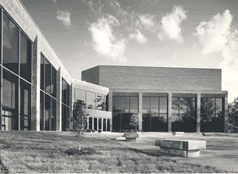 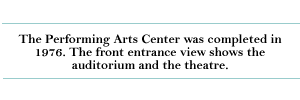
Elevated passageways connect it with the performing component, which
contains the 1500-seat Kresge Auditorium named for donors Dorothy
M. and Stanley Kresge, the 400-seat Moore Theatre named for Frank
M. Moore, and the 200-seat Thompson Recital Hall named for Van
Denman Thompson, longtime director of the School of Music. The
center also includes a landscaped amphitheatre and courtyard provided
by Kappa Alpha Theta, along with a graceful tower holding a 37-bell
carillon donated by Alpha Chi Omega. Both national sororities were
founded at DePauw seven decades earlier. The largest single gift
making the building possible was $2 million from the Krannert Charitable
Trust, the creation of Herman C. and Ellvora Decker Krannert of
Indianapolis.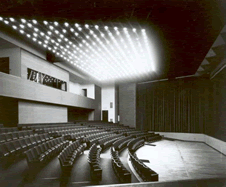

The spirit of educational experimentation and reform was strongly
evident at DePauw during the first half of the Kerstetter administration.
In 1964, after extensive study and discussion, the faculty approved
a major overhaul of the class schedule. No longer was credit to
be awarded in "hours," based on the number of hours spent
in class each week; instead a new system was adopted in which
credit for one "course" was given for a class which met
for a maximum of four hours per week during a single semester.
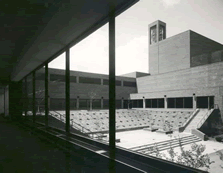 
This was intended to provide students with greater opportunity for
independent study and instructors with more flexibility in
organizing their class work. A few half- and quarter-courses were
included, chiefly in the School of Music and the art and physical
education departments. The normal student load was set at four
courses and the faculty teaching load at three courses a semester,
with adjustments for laboratory periods in the natural sciences.
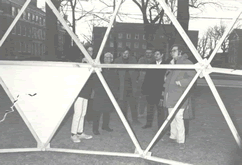
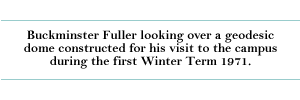
Another major change in the organization of the academic program
took place in 1970. After some discussion of an alternative three-term
system, the faculty voted to adopt a 4-1-4 academic calendar, made
up of two slightly shortened semesters and a four-week Winter Term
in January. The first semester was scheduled to begin in late August
and end just before Christmas eliminating the two-week hiatus formerly
interrupting the first semester. In addition to the 31 courses needed
for graduation, students were required to take four Winter Term
offerings, which consisted of specially designed faculty-directed
projects either on or off campus.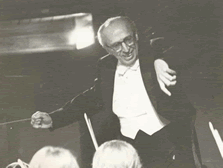
______________________________________
Composer-conductor Aaron Copland rehearses the DePauw Symphony
during a three-day guest appearance at DePauw's first Winter Term in
1971.
______________________________________
The
first Winter Term in January 1971, featured such special events
as lectures by architect R. Buckminster Fuller and the conducting
of composer Aaron Copland at a Contemporary Music Festival sponsored
by the School of Music. Winter Term eventually proved to be a convenient
opportunity for professional internships, volunteer work projects,
and study abroad. The program was later amended to include two-week
as well as four-week projects, and the graduation requirement was
reduced to seven two-week projects or three and one-half Winter
Terms.
Back
to Top
Pages:
<< Back 1
2 3
4 5
6 7
8
9 10 Next
>>
|









